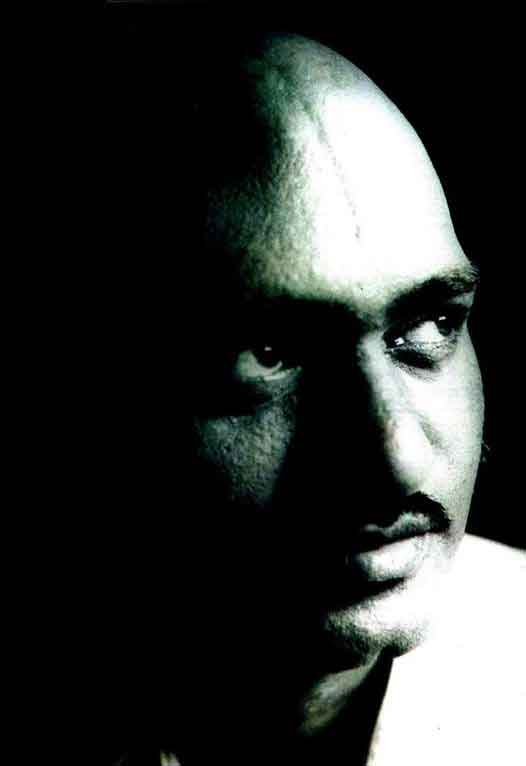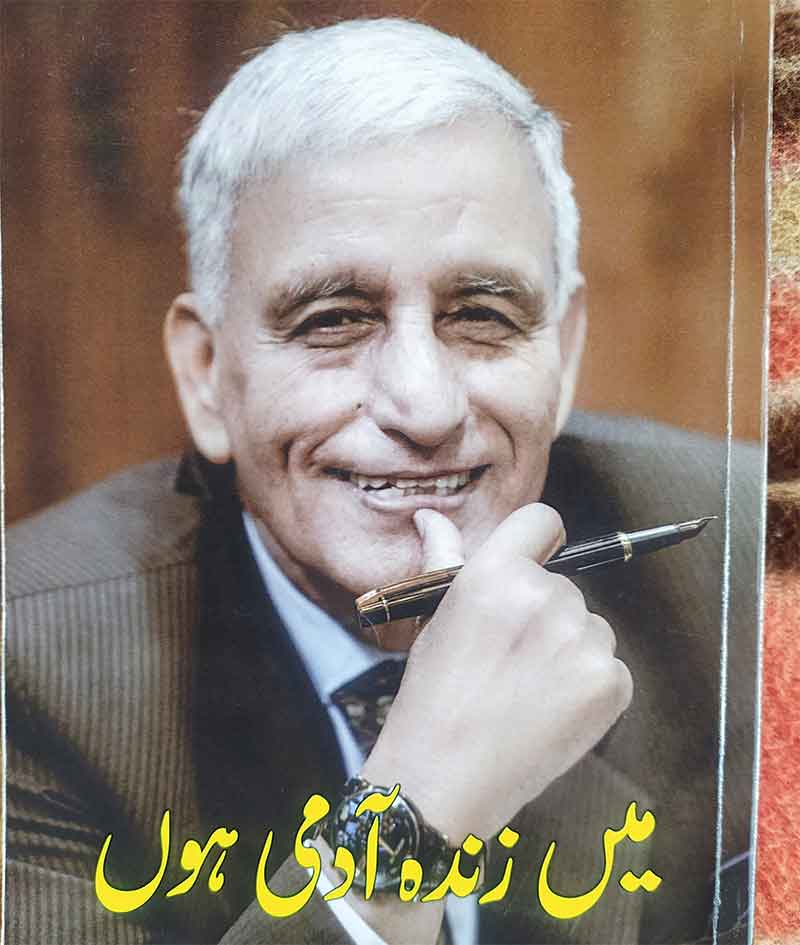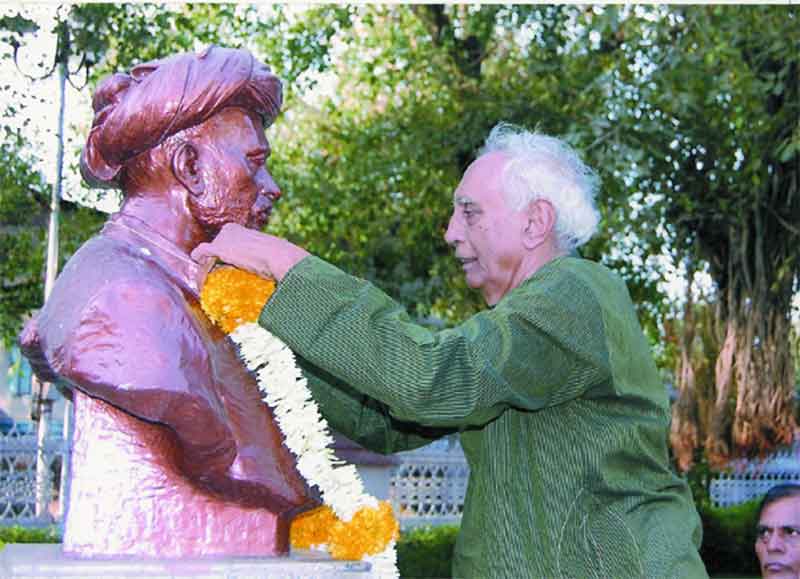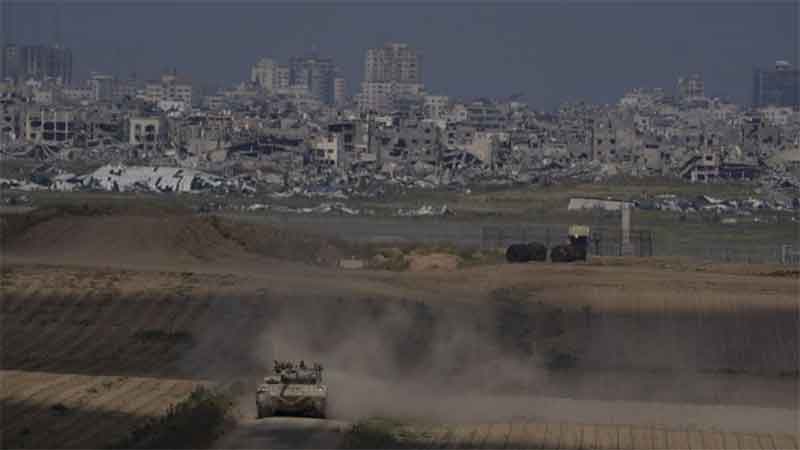
It has been Forty years since Revolutionary poet Cherabanda Raju left us. Thinking of him is reminiscent of a lotus blooming in full. Chera was an epitome of creativity of revolutionary poetry, transcending realms few revolutionary poets did in his era. The VIRASAM staged a meeting in his memory on July 3rd, this year in Hyderabad in Sundaraya Vigyan hall, commemorating his 40th death anniversary. Secretary Allam Rajayya made a most illustrative presentation.
Chera’s artistic style is echoed in the verses, poems and stories composed by Virasam writers in recent decades. Many Virasam leaders were deeply inspired by him, whose poetry and writings enabled Naxalbari and Srikakulam struggle to flower till this day. We need to resurrect such creative artists today to confront Brahamanical and Hindutva neo-fascism which is reducing democratic culture into ashes. Chera’s poetry could turn a spark into a prairie fire. Ressurecting Cherabanda Raju is vital in keeping the revolutionary writers movement afloat.
Raju, whose real name was Baddham Bhaskara Reddy, was born into a farming family in Ankusapuram village of Nalgonda District in 1944. Chera, as he was endearingly called by his friends, was influenced by the literary works of Chattopdhyay nd Rabindranath Tagore during his formative years. Even the legendary poet Sri Sri derived a lot of inspiration from him and dedicated his most popular anthology of poems Maha Prasthanam to Chera. Cherabanda Raju was a teacher by profession and held a degree in Oriental Literature. His literary works include Ganjineellu, Nippurallu, Gamyam, Kattipaata, Diksoochi, Muttadi and Kaanti Yuddham. He, through his poetry, advocated the betterment of the oppressed classes such as Dalits and peasants and fought for their rights. After the Digambara School of poetry had lost steam and became a spent force, he cofounded Virasam (Viplava Rachayitala Sangham) along with other revolutionary poets such as Varavara Rao Sri Sri, Kutumba Rao and Ramana Reddy, and continued his poetic journey.
His poems reflected the glaring poverty he recounted in his village. He says that he will die for a man. Digambarakavulu wrote their introduction in the first volume or till the end of the birth date of death saying ‘Kasi and revenge on one God only’. Based on the events and games he remembers, he says his birth year is 1944 That’s right but Chera would’ve been 69 entering the 70’s right now.
Till his death on July 2, 1982, the memories of him are permanently embedded in the minds of activists, like K Venugopal who hold him in great esteem. He spent two years in Mushirabad Jail and more than two years in Gandhi Hospital (named after Gandhi Hospital). Venugopal met him in meetings in Amberpet house, jail, courts, and hospital. He has spoken and written about his life and poetry in many places. That is the Navanavonmesh spirit that permeates a new spirit whenever we speak and write..
The Amberpet rented house where he spent a lot of time is no longer there. Mushirabad jail was demolished and made Gandhi hospital. They are thinking about demolishing Gandhi hospital and turning it into real estate.. The small two-room house he collected and built has now turned into an apartment by Telugu society when he was fired and ill. Shyamalakka, who was a complete companion to him in every way, has died prematurely due to illness. His daughter Udayini lost her life before reaching thirty years of age due to cancer Son Kiran. Is Cherabanda Raju’s only family member left.
Chera was first arrested and released under the Preventive Detention Act in 1971.Later Chera was also arrested in Hyderabad. His detention was over within a month and a half, but for another six months, Chera and Mamayya(Varavara Rao) were added as accused in the Secunderabad conspiracy case.
Chera languished in Mushirabad Jail attended trials in Metropolitan Sessions Court.in the early 1970’s. He participated in jail meetings and was released on bail and imposed an emergency. He participated in the first meetings of the Radical Student Union in Hyderabad in February, and after that he particiatd as a speaker for forty Radical Students Union meetings in Karimnagar district. In April, he was arrested by protesting along with Sri Sri at Telugu Mahasabha.
Chera survived exactly five years after the emergency, in which he was in hospital for two and a half years. In 1979 he was admitted to Gandhi hospital with severe liver problem and when he was fifteen days .He expired suffering from brain tumour .in 1982 after undergoing 3 operations.
Cherabanda Raju was one of the principal figures in weaving the VIRASAM or Revolutionary Writers Association which played a pioneering role in bringing politics of Naxalbari into the literary fold. With Varavara Rao,Sri Sri,Nikhileshwar and Jwalamukhi he was part of the nucleus that sprung up the Organisation. He crystallised a new form of writing poetry, which branched away from tradition or conventional norms. Chera’s poetry could turn a spark into a prairie fire.
He enabled many a new rose to bloom amongst revolutionary poets and student cadre, with his work breeding ground. His poetry infused spirit of revolutionary struggle in mass organisations like Andhra Pradesh Radical Students Union and Rythu coole Sangham,touching the very core of the soul of the oppressed youth and peasantry. He also played a role in steering the 1st meeting of the Civil Liberties Commitee .Chera also toured India to give a boost to revolutionary cultural fronts, like in Kerala and West Bengal.When Chera was seriously ill, financial help poured in from different states. His verses were translated into Bengali, Kannada Malayalam and Gujarati.
From the formation of Revolutionary Writers Association till the imposition of emergency i.e. from 1970 July to 1975 June, Cherbanda Raju addressed at least fifty meetings and meetings in Hanumakonda-Warangal in five years. K.Venugopal came to Hanumakonda only after 1973 June for his studies.,where he met Chera.
Cherbanda Raju portrayed great diversity as a poet. Inspite of a short life of 38 years, he gave it full justice turning spark into a prairie fire with his writings. Three years in jail, three years for illness, , fired from government job, financial problems and cases, fifteen years for writing literature took the toll out of him, but for 15 years he remained as energetic as ver. He formulated seven volumes of poetry, wrote over a dozen stories and a dozen more plays and , three novels. An incomplete novel was also left behind. He travelled all over the state for delivering speeches and poetry reading. He performed the task of secretary for the Revolutionary Writers Association for a year. His departure was a big loss for the youth movements and the Jananatyamandali.
He did all these things with his full heart and soul. He did it with care. Telugu cadres gained training, studied ancient literature, taught lessons, and gained hold on to text poetry. Sharpening the artifacts from time to time He wrote the things that even the revolutionary literary movement had hesitated to at that time. When he felt that his goal will not be fulfilled in the form of verse and poem, he turned towards song. He composed his own songs. While being brought to court with handcuffs in detention, he voiced his poetry and songs. Each of his seventeen songs were like different chapters in a book. He gave poetry a subtle power of its own.
Poetry
The English translation of Chera’s poems was published by All India Revolutionary Cultural Committee in 1985. Four volumes were published of of Sahitya Saraswam in 2003. Chera portayed anguish of farmers in Karimnagar, Adilabad farmer’s struggles, and illustrated the status of the class struggle and consciousness of that time. Telangana’s armed struggle, the experiences and lessons of Naxalbari , Srikakulam were conveyed though the pen of Chera literature. Fierce struggles against the looting and oppression of the people’s daily lives — from 1967 to 1977 many strict restrictions, arrests, jails, killing of around 16,000 youths across the country, detention of thousands of youths — until the then Indira Gandhi government This is the worst situation that has made me a fascist…. He projected how like never before, the decade of revolution in Indian history has emerged and advanced people at an unprecedented scale. Cherabandaraju poetrized all those emotions. In the same effort, two plays — ‘Villages Awakening’ (1974), ‘Porridge Water’; Plays — ‘Village Calling’ (1965), ‘Fire in the Moon’, ‘Clash’ (1971), ‘Temporary Labor’ (1973). The thing in these dramas is — as told earlier, that ten years of revolution. In 1965, from the story ‘Village is calling’ to ‘Chiranjeevi’, he wrote thirteen stories. Four novels written by Chera gave more extensive and critical shape of the order he created and the revolutions that took place in the areas where he lived.
In “Ours is the Age of Revolution” Chera illustrated the revolutionary spirit of the time .-,portraying struggle against fascism at it’s helm. in a poetic form.
“Ours is the age of Revolution/If we rebel victory is Ours;You toilers and workers/Die not of agonies/Arrive with the Movement/Of Peoples Armies fighting with arms/;With the deluge of Peoles War/Hurling itself on Exploitation /The Constitution of the bourgeoise /Is going to be levelled to the ground ;One who does not fear sacrifices/Is Our Comrade/One who does not pity he Enemy/Is Our Friend/Liberties of the People/Are denied to the Police State/Peoples Justice are strangled/To death in the Courts, Prisons and hanging Poles/Cannot arrest Light/Cannot frighten away/The people fighting every minute ‘When the monstrous imperialist mountains are falling/Which powers can withstand/The strength of the People.”
Quoting Virasam secretary KVR in a Forward of Chera Kavitha Samputi Gamyam which was released in 1973 September. “Even as a poet, it may seem soft, but in fact Cherabandaraju is tougher than a diamond. Why should we think harsh and harshness are synonyms, even if not harsh? If his poetry is a sword, let that sword butcher be sharp as a knife, sharp as a sword. This poet is the one who eats fire as food and applies fire all over his body and acts as axes from the belly of dark laws and throats as hammer. He is not as saint as he appears above. Softness is different, softness is different. One is weakness, the second is strength. Cherabandaraju’s “blood songs” are being played; the reason is that the humanity which is changed to the calmness of the fight is moving his mind and heart.”
“Revolutionary poetry is the only poetry that is suitable for the time and the people. Those people are rising from the graves of life as ‘letters on paper’, as battle flags. A poet should be among his people. People’s protest should follow the revolutionary parties. A lesson should be learnt from trees about consciousness and use. Like trees, people are the finger of artists. All the fruits of art should be used for the people. Cherabandaraju’s poetry, thus revolutionary poetry, is on the path of gaining meaning for the people. This feeling is relationship; feeling is equality, building bridges between literature and life. Cherabandaraju’s poetic urge, has been infected from the earth to the people who believe in the earth.
Those people are fighting now. 5 years have passed since the Indian revolution. The farmers, and labourers are fighting from Naxalbari to Srikakulam, Mulugu areas, for the sake of land and for the sake of constitution, starting from Villambulu to guns. These people, their struggles, this Indian revolutionary child, Cherabandaraju Kavithastuvu. Poets and listeners are people. Cherabandaraju has seen his village life in a new light in his childhood. Even after harvesting thousand times a year, the person who does not get drenched in porridge is not only his father, the farmers are the same, the laborers are worse than that. Those who create wealth are unable to enjoy their own creation. Let the fruit of their labour be for someone else, that is riding on them as an enemy, and they are living worse than their work. This status – “today” – needs to end. Awakened villages- Revolutionary villages- have to move forward by ‘Observing-Defeating’ this system.
My name is hunger
My body is the weapon
An invasion is my existence
The movement is my breath
Revolution is my village
It’s not a dream – it’s a plain reality. A base may collapse, a struggle may be suppressed, and history will not go back. Soaked with the blood of the heroes of the people, “seeds of the feet of yesterday, sprouted with the blood of heroes of the people” will give meaning to the struggles of tomorrow. Revolution will always maintain its flaming coolness from the flames that never quench. This is not fiction – revolutionary imagination.”
Harsh Thakor is a Freeelance Journalist who has toured India to over mass movements and been in touch with VIRASAM,attending many of their public meetings.
















































